How to run Umami Analytics + Supabase + Vercel for free
Umami Analytics is a free, privacy-friendly open-source web analytics. It can replace Google Analytics because Umami meets the privacy requirements of the GDPR (General Data Protection Regulation).
Umami is developed by Make Cao, an ex-Adobe engineer. His Umami Software company is one of the growing startups.
Since Umami is an open source program, it can be run for free if we use some free hosting/database services. *There is also a free cloud plan with limited features.
In this article, I'll explain how to make a database on Supabase and then how to install it on your appropriate website.
*Updated on February 9, 2024: Since January 26, 2024, PGBouncer has been duplicated and the database URL has been changed. I have updated this article accordingly (Reference: Supabase GitHub)
Working environment: Umami v2.2.9
About Umami Analytics
I've tried some Google Analytics alternatives and found that Umami provides user-friendly UI and sufficient functions. Because it can record even click or input events, you'll be able to follow who bought or who download your services.
- free of charge
- open source
- language support
- realtime data
- easily fetching API data
- simple UI
I'll explain how to solve the first deploy problems later. You can also refer to the latest Discussions or Issues at Umami Official GitHub page with the error code you get.
Preparation
Those three accounts are needed.
- GitHub: Store Umami itself
- Supabase: Database to store website info, access data etc.
- Vercel: Hosting - integrate data from Umami on GitHub and Supabase together.
Of course, you can use other hosting services such as Netlify. I'll explain the case of Vercel as an example.
Fork Umami on GitHub
First, fork Umami from their official Umami repository.
*"Fork" is a sort of "copy" that also follows official updates.
©GitHub umami-software/umami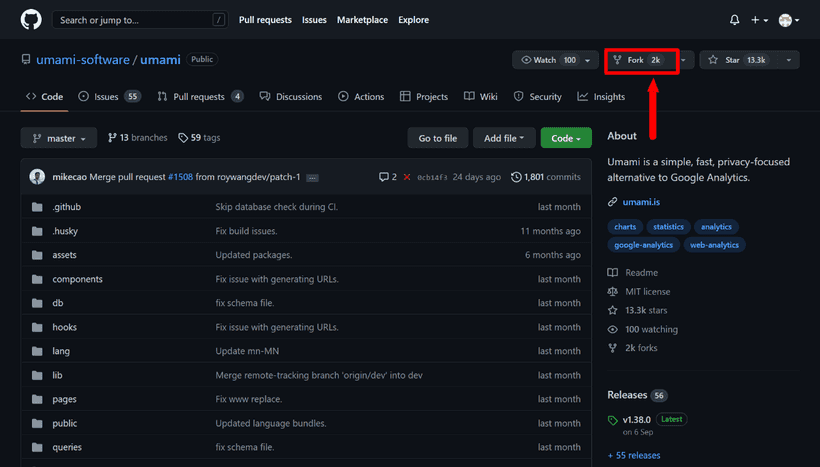
Press the fork button and create your repository of Umami. The repository name is up to you. I named it "umami" for example.
©GitHub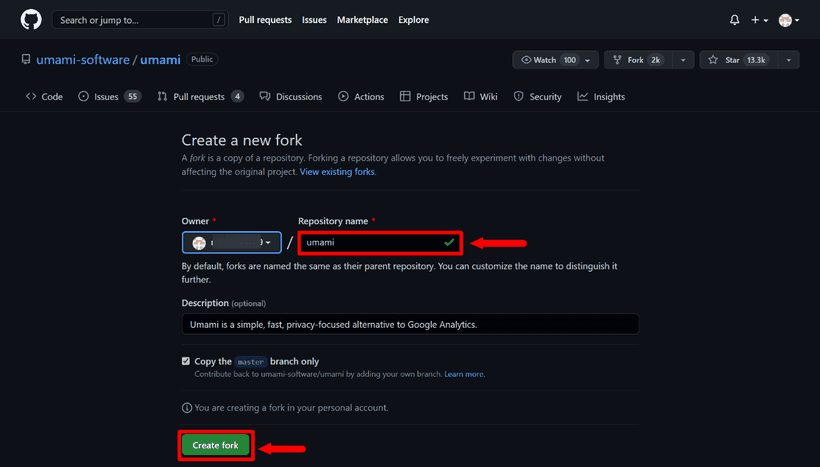
Press Create fork then you'll see the forked repository on your account.
Create a database on Supabase
Next, create a new project on Supabase and set up a database for storing access data.
On your Supabase account top page, press + New Project.
©Supabase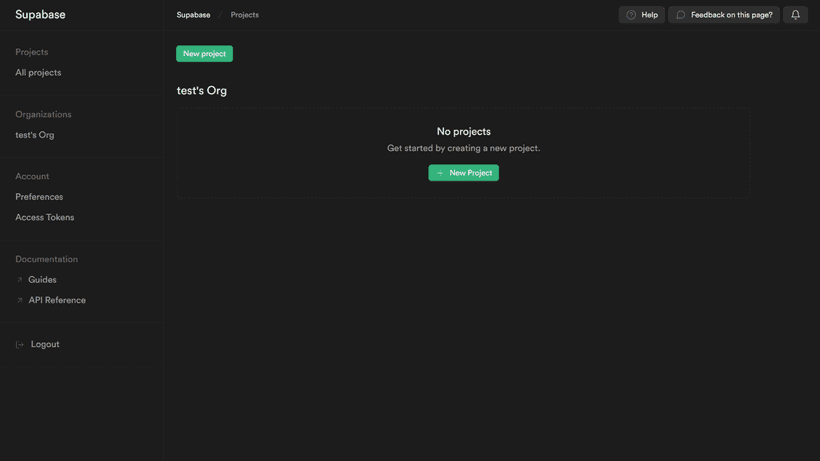
You can name the project as you like, but I just named it umami again. Then also choose the nearest Region.
©Supabase
Do not forget to memorize the Database password as we'll need it later.
Once you're done, go next.
Create tables on the database to store data
Move on to the project you've just created. From the left menu, go to the SQL Editor where we create tables with.
On the SQL Editor, open a new Editor by pressing + New query.
SQL Editor on Supabase ©Supabase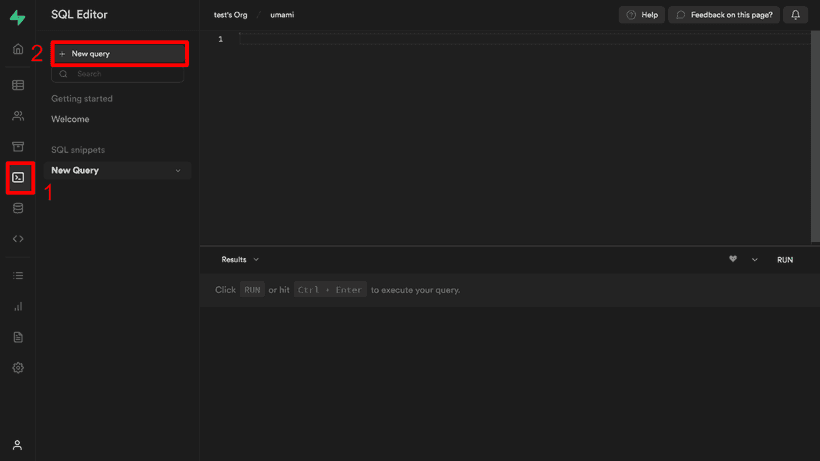
Copy the official SQL code first.
Copy SQL code from GitHub ©GitHub umami-software/umami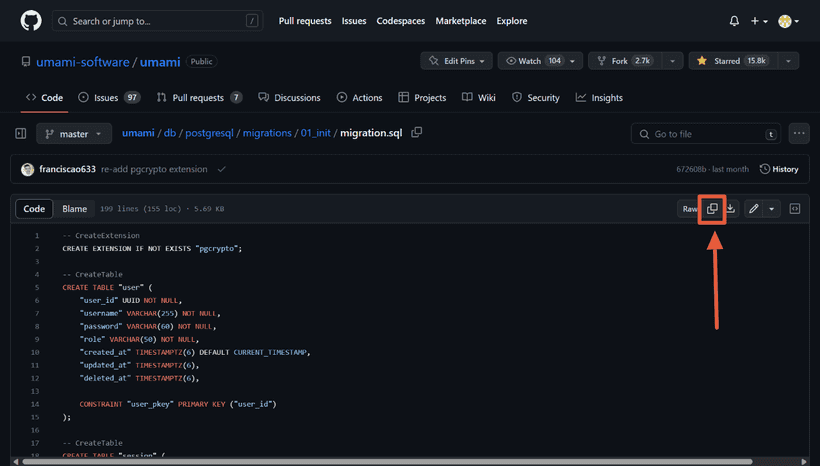
Then paste it to SQL Editor and press RUN.
SQL Editor ©Supabase
Once the SQL code runs and ends without problem, it says "Success. Now rows returned".
Then open the Table Editor from the left menu, and you'll be able to see the tables created.
Table Editor on Supabase ©Supabase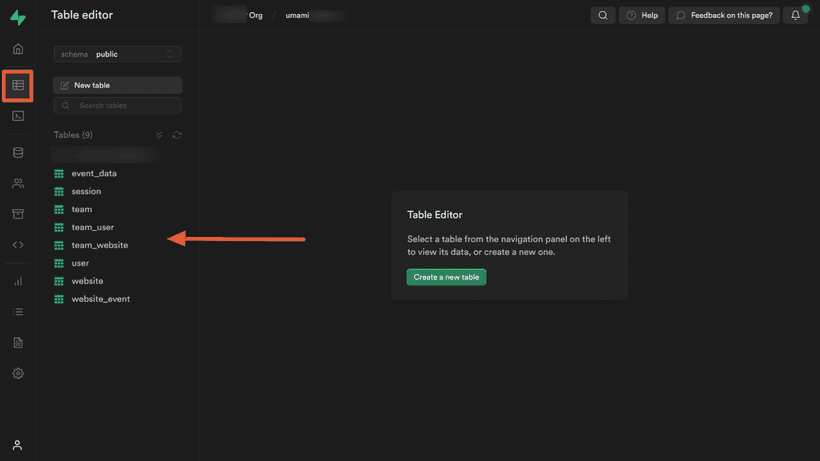
How to solve problem at the deployment (v2.2.0)
With version 2.2.0, the deployment got failed and the following error on Vercel;
Error: P3005
The database schema is not empty. Read more about how to baseline an existing production database: https://pris.ly/d/migrate-baselineThis error was reported in this thread with a solution.
- Clone the forked Umami repository to local
- Add
DATABASE_URLenvironment variable to.envof 1 (see *2 below) - Run the following code on local
yarn install
yarn build-db
npx prisma migrate resolve --applied 01_initThe database on Supabase gets ready then. After following the steps above, move on to the next section.
*2 DATABASE_URL environment variable should be like this. Read the next section for more detail.
DATABASE_URL=postgres://[db-user]:[db-password]@aws-0-[aws-region].pooler.supabase.com:6543/postgresPreparation before the deployment on Vercel
You are almost there!
Prepare the following information before running the first deployment;
DATABASE_URL=postgres://[db-user]:[db-password]@aws-0-[aws-region].pooler.supabase.com:6543/postgres
HASH_SALT=any-random-string- DATABASE_URL:
[db-password]: the password entered when the new Supabase project was established[db-user]: you can see the Supabase project URL[aws-region]: Database's region
- HASH_SALT: a random string (any string)
The DATABASE_URL is also provided in Project Settings > Database > Connection Pooling (except the password).
Setting page ©Supabase
About HOST, you can see it in the project URL.
Project top page ©Supabase
HASH_SALT can be whatever. To generate something, MD5 Hash Generator could be practical.
Create a new project on Vercel
Go to the Dashboard on Vercel and create a new project for Umami.
Dashboard ©Vercel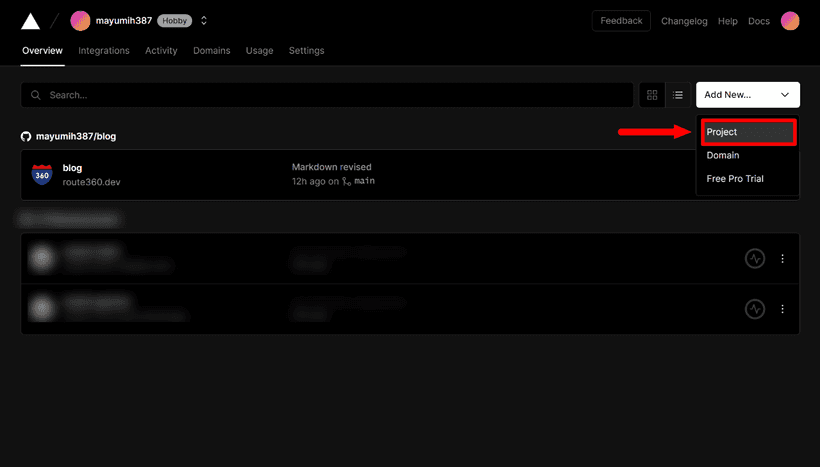
Connect to GitHub.
Connect to GitHub ©Vercel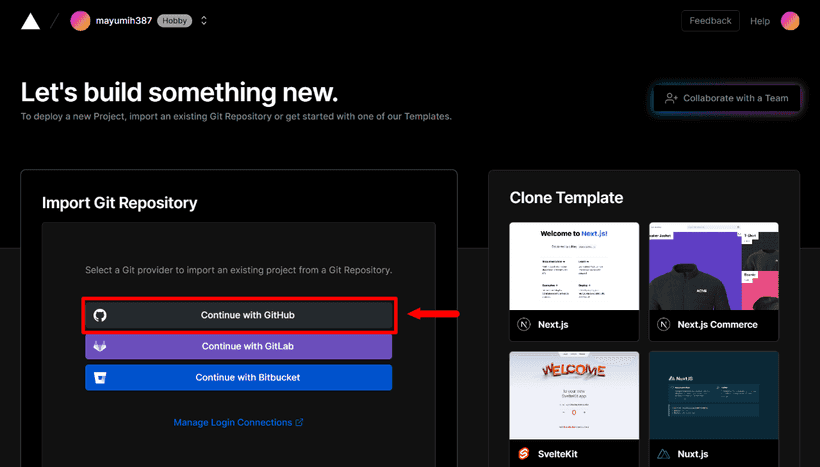
To refer to GitHub repositories, authorize the repositories to Vercel on GitHub.
If you haven't authorized your Umami repository, press "Adjust GitHub App Permissions →" and go GitHub account.
Select the repository to connect, then press Install.
Authorize a repo on GitHub ©Vercel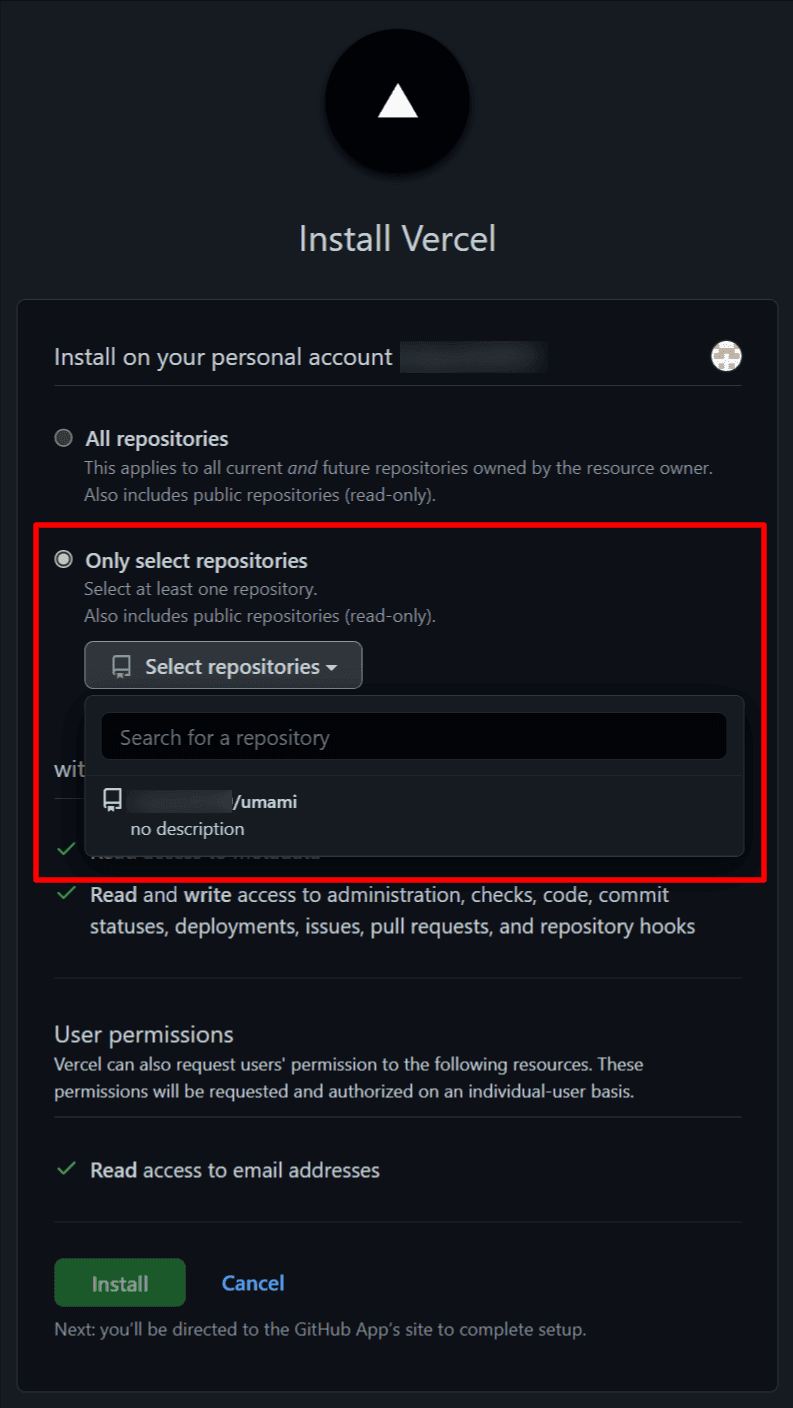
Though it's also possible to authorize all your repositories, for security reasons, it'd be safer to choose the ones to connect to Vercel. Here, I choose "Only Select Repositories" and then select my Umami repository.
As the Vercel account can refer to the GitHub Umami repository now, select it.
Import a repository ©Vercel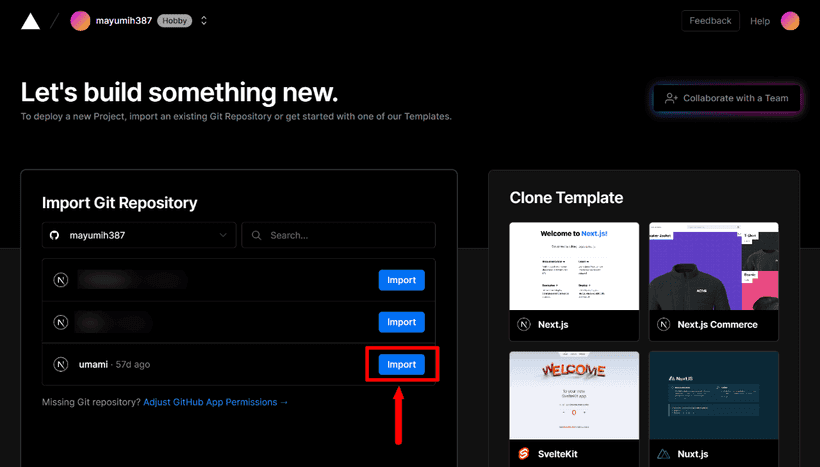
Just before the deployment, add DATABASE_URL and HASH_SALT to Environment Variables. You have to press Add button to add. Then Deploy!
Add Environment Variables ©Vercel
The status must turn Ready after a few minutes. You can see the URL is generated as well.
Deployment completed ©Vercel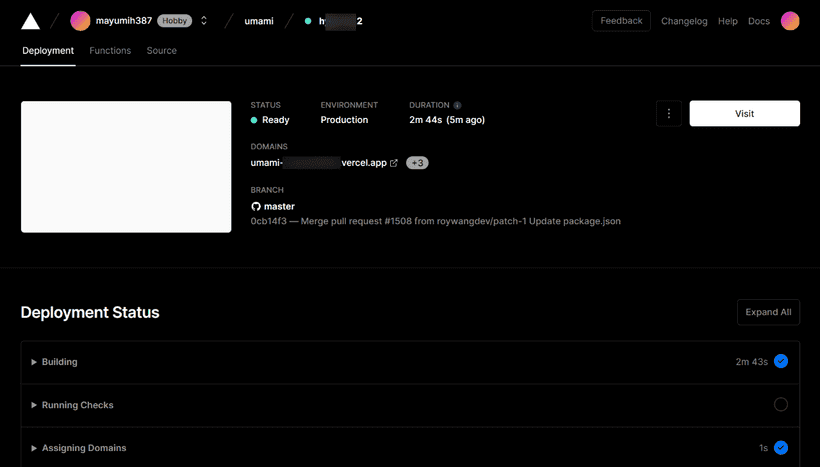
Umami top page would be displayed on that URL.
Umami Analytics login page ©Umami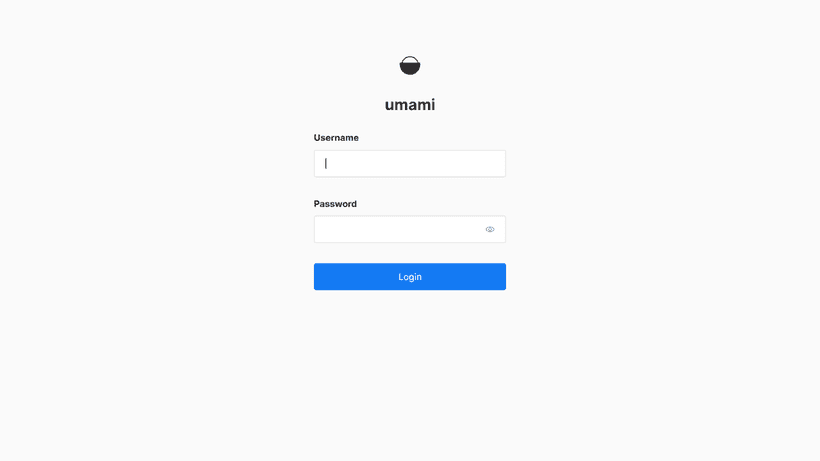
Login to Umami
The default login settings are prepared by Umami as follows;
Username: admin
Password: umamiAfter logging in, go to the Account page, then update your Username and Password.
Update username and password ©Umami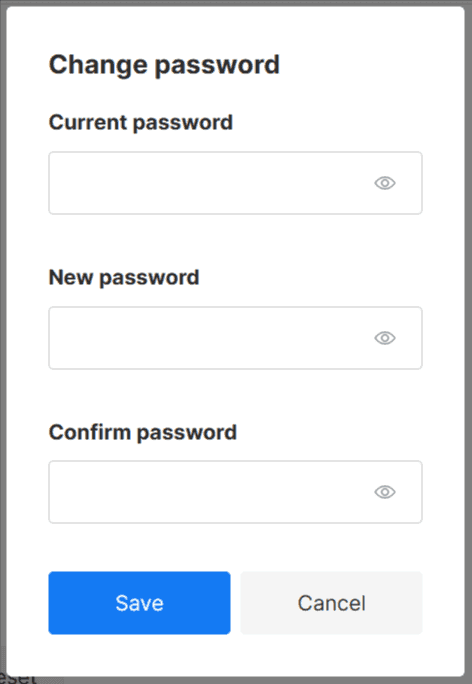
You can choose a language from 43 languages, which is great!
Add a tracking code of Umami
Also after logging in to Umami, add a website to analyze, then get a tracking code.
<script
async
defer
data-website-id="xxxxxxxx-xxxx-xxxx-xxxx-xxxxxxxxxxxx"
src="https://example.vercel.app/script.js"
></script>This is the script to add to your website.
For Next.js
In case of the integration to Next.js, use next/script.
import Script from "next/script"
function Component() {
return (
<>
<Script
strategy="afterInteractive"
data-website-id="xxxxxxxx-xxxx-xxxx-xxxx-xxxxxxxxxxxx"
src="https://example.vercel.app/script.js"
data-do-not-track="true"
/>
</>
)
}I'm not sure if it depends on the browser settings, but the script loading without data-do-not-track="true" returned a 403 error on my environment.
For Gatsby.js
If you use Gatsby.js, a community Umami plugin could be practical.
Appendices
appendix 1: How to update Umami
Umami Analytics is updated constantly.
When the official Umami repository releases a new version, a notice would be displayed on the top of your Umami website.
Update notice on Umami ©Umami
The way to catch the update, go to your Umami repository on GitHub, then press Sync fork -> Update branch. Your repository will be then synchronized with the official Umami.
Update Umami on GitHub ©GitHub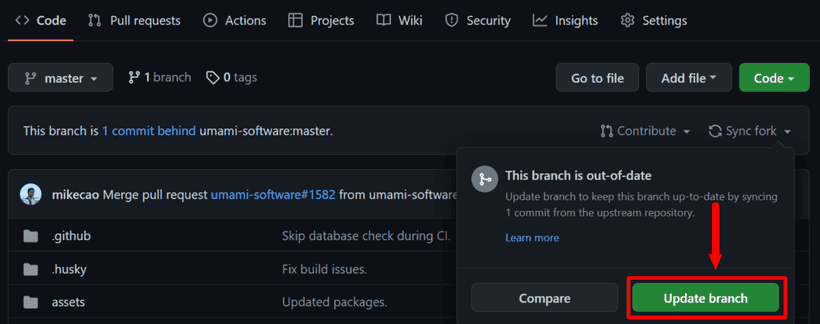
Once you find the update announcement, I recommend updating your Umami repository as soon as possible. If there is some gap between your Umami and official Umami versions, the update can fail sometimes.
appendix 2: Exclude specific IPs from tracking
To exclude specific IPs, add the IGNORE_IP environment variable with a comma-delimited list of IPs on Vercel (or other hosting services);
Settings > Environment Variables
Environment variables ©Vercel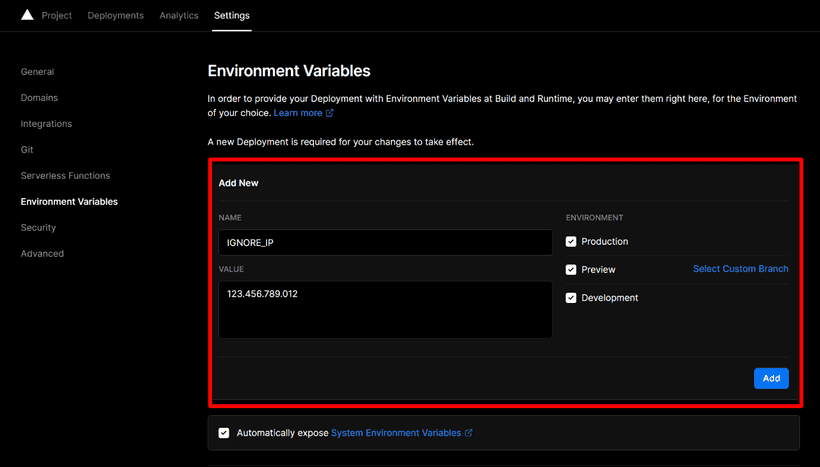
Reference Environment variables | Umami
Your IP may change sometimes depending on your contract with the internet provider; in general, because the providers offer dynamic IP addresses, your IP doesn't stay the same. If you want to exclude your IP from Umami tracking, you have to be careful of it.
appendix 3: Set your own domain
It's also possible pointing your own domain to Umami website. If you have a domain already running, you can set its subdomain to it.
One Vercel app can have several domains.
appendix 4: Usage of Supabase after 6 months
I've been running Umami for a 2,000 pages website for 6 months now, and the usage of the database is still below the limit of the Supabase free plan;
Settings page ©Supabase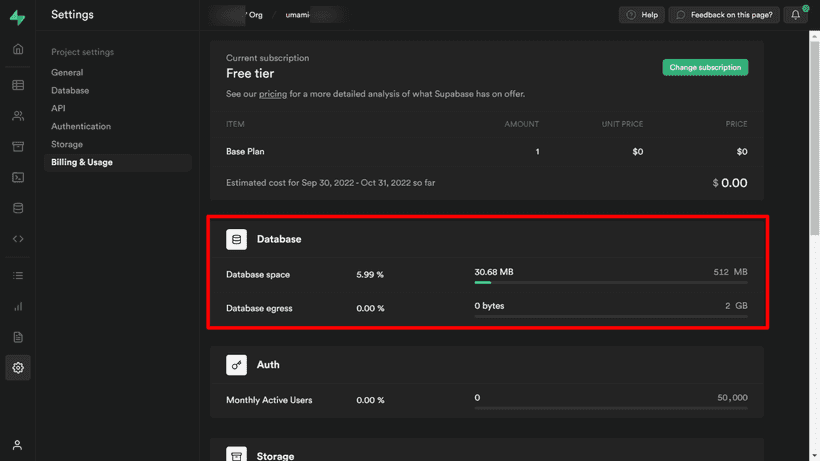
appendix 5: Railway no longer offers free operations for 24/7
It might be off the subject, but it used to be possible to run Umami for free on Railway before. They changed their free plan (*), and it's impossible to keep Umami running 24/7 now, sadly.😞
*$5 or 500 hours of usage, it stops when whichever reaches the limit.
We never know if Supabase would charge something in the future, but it's still free of charge. I appreciate it!